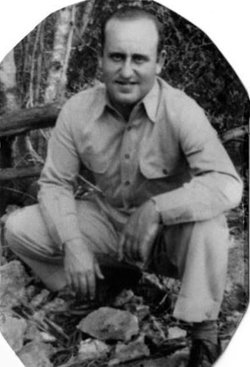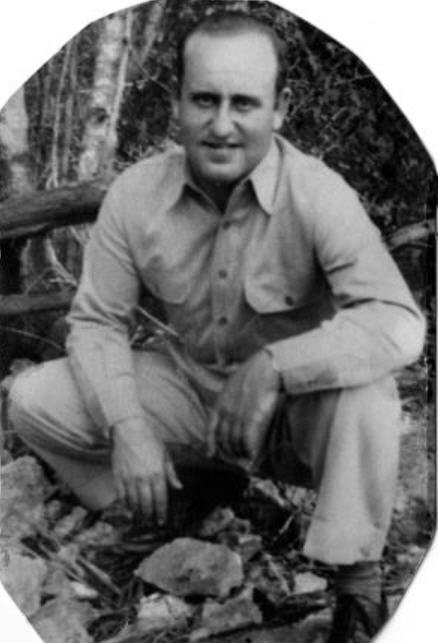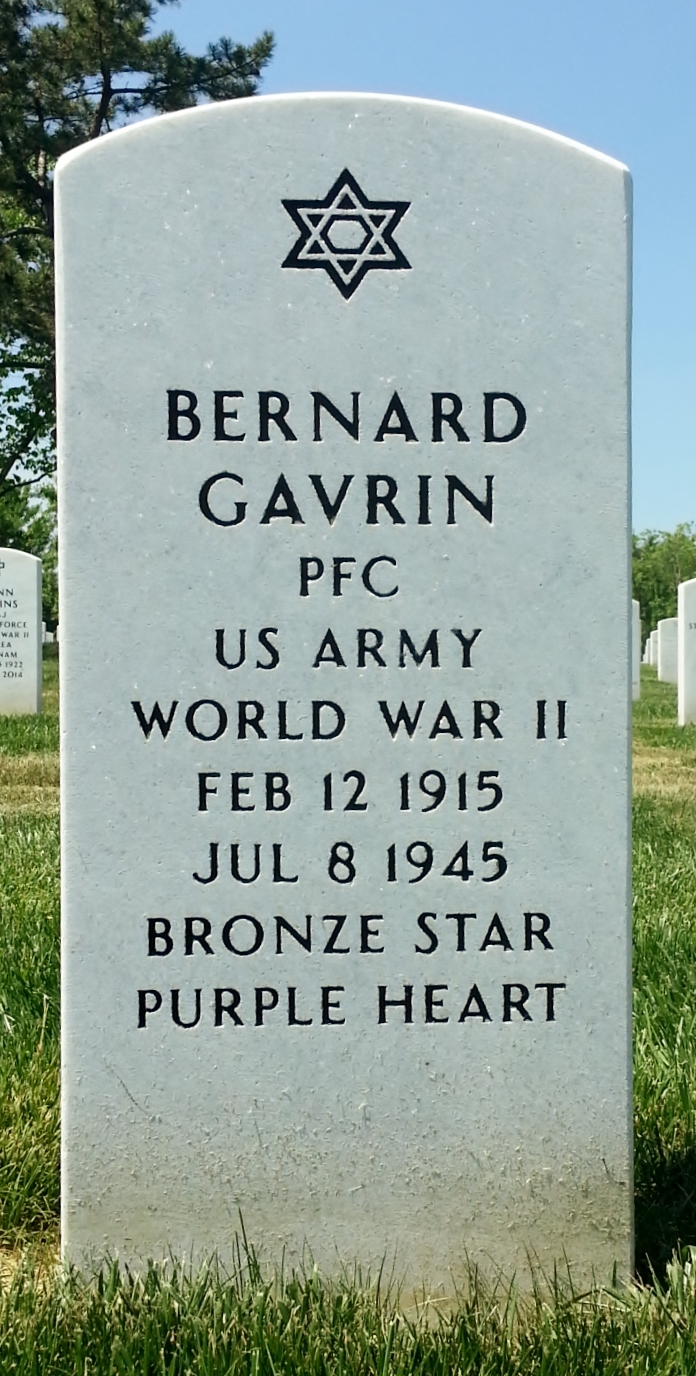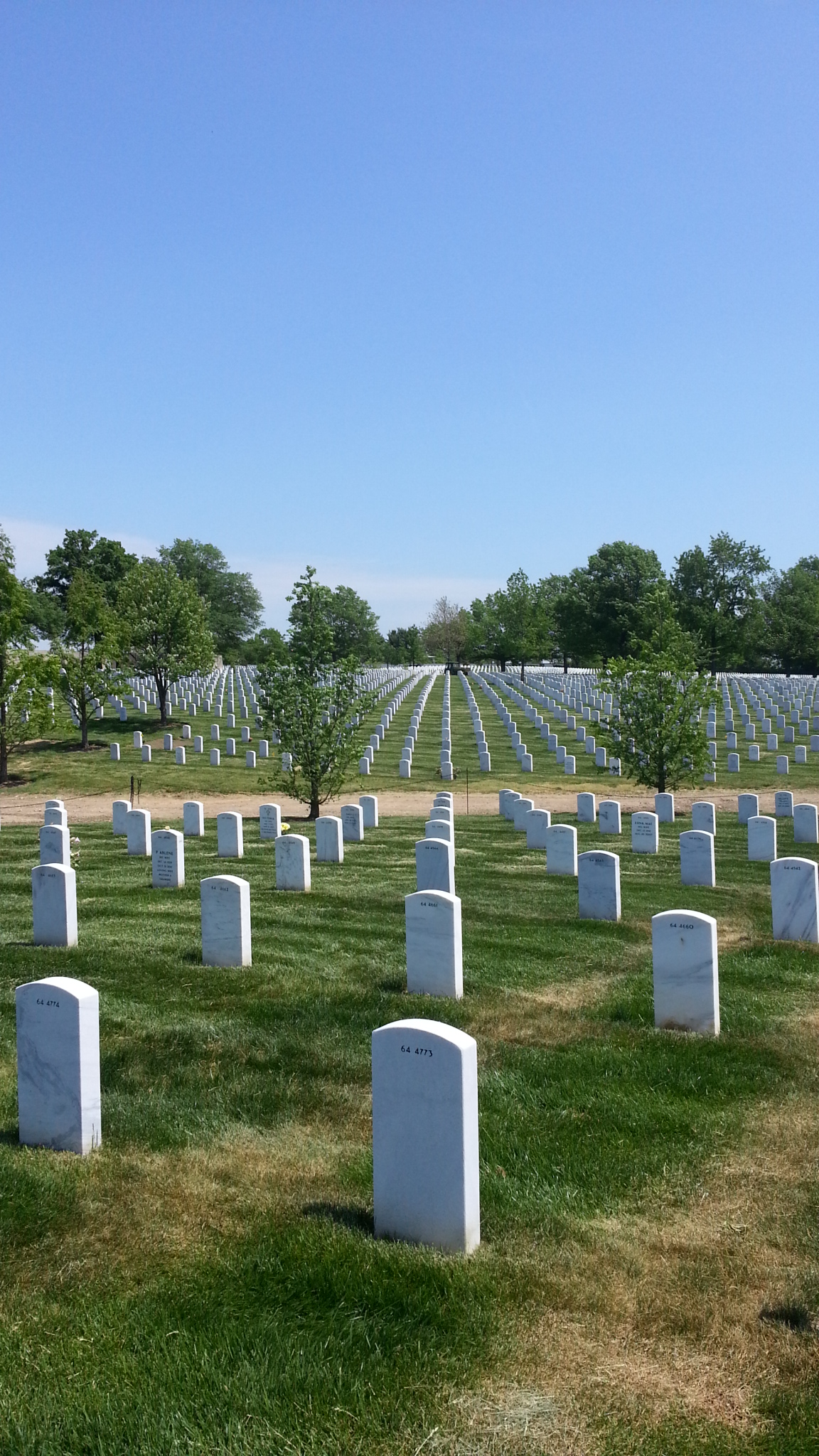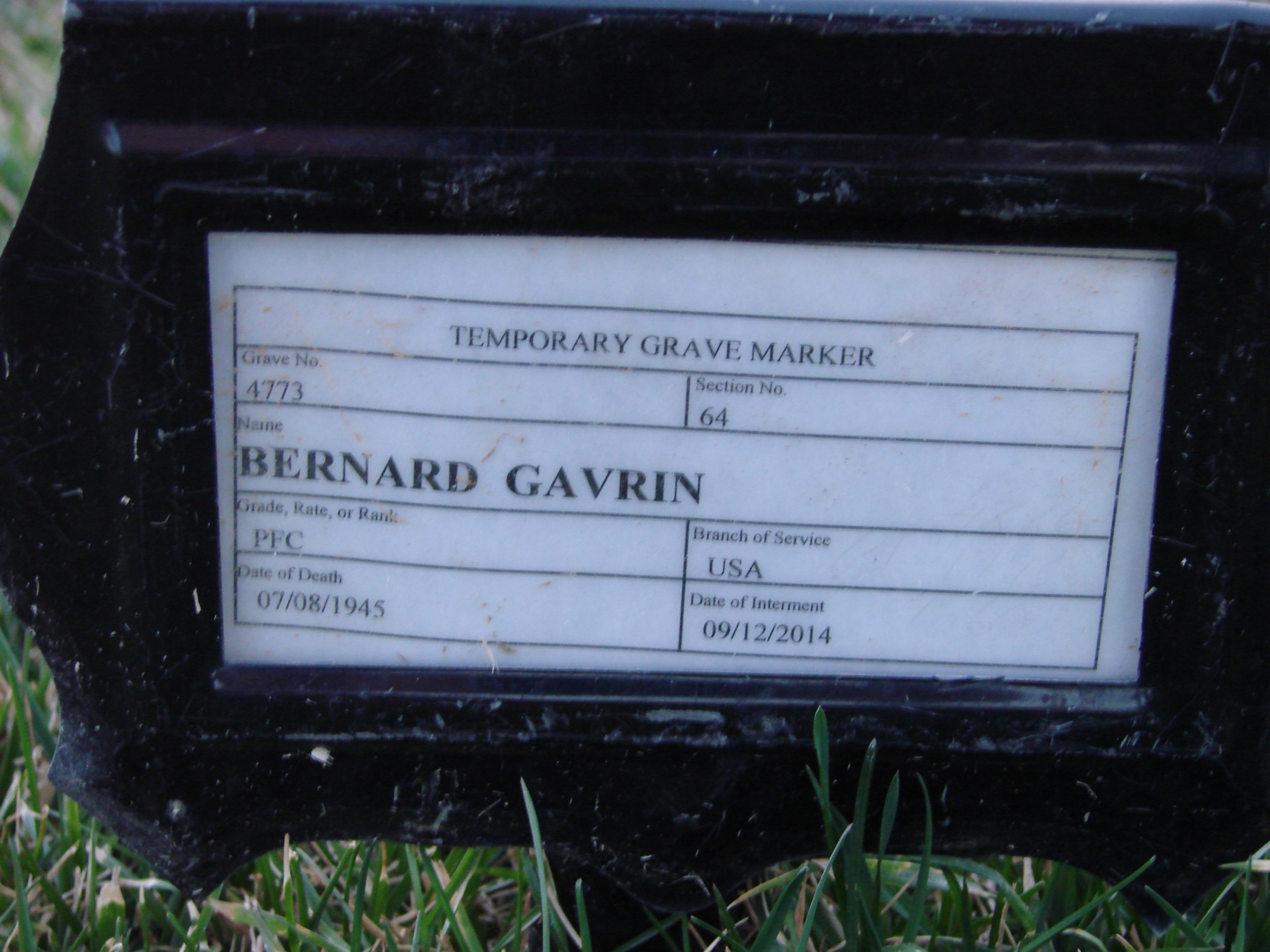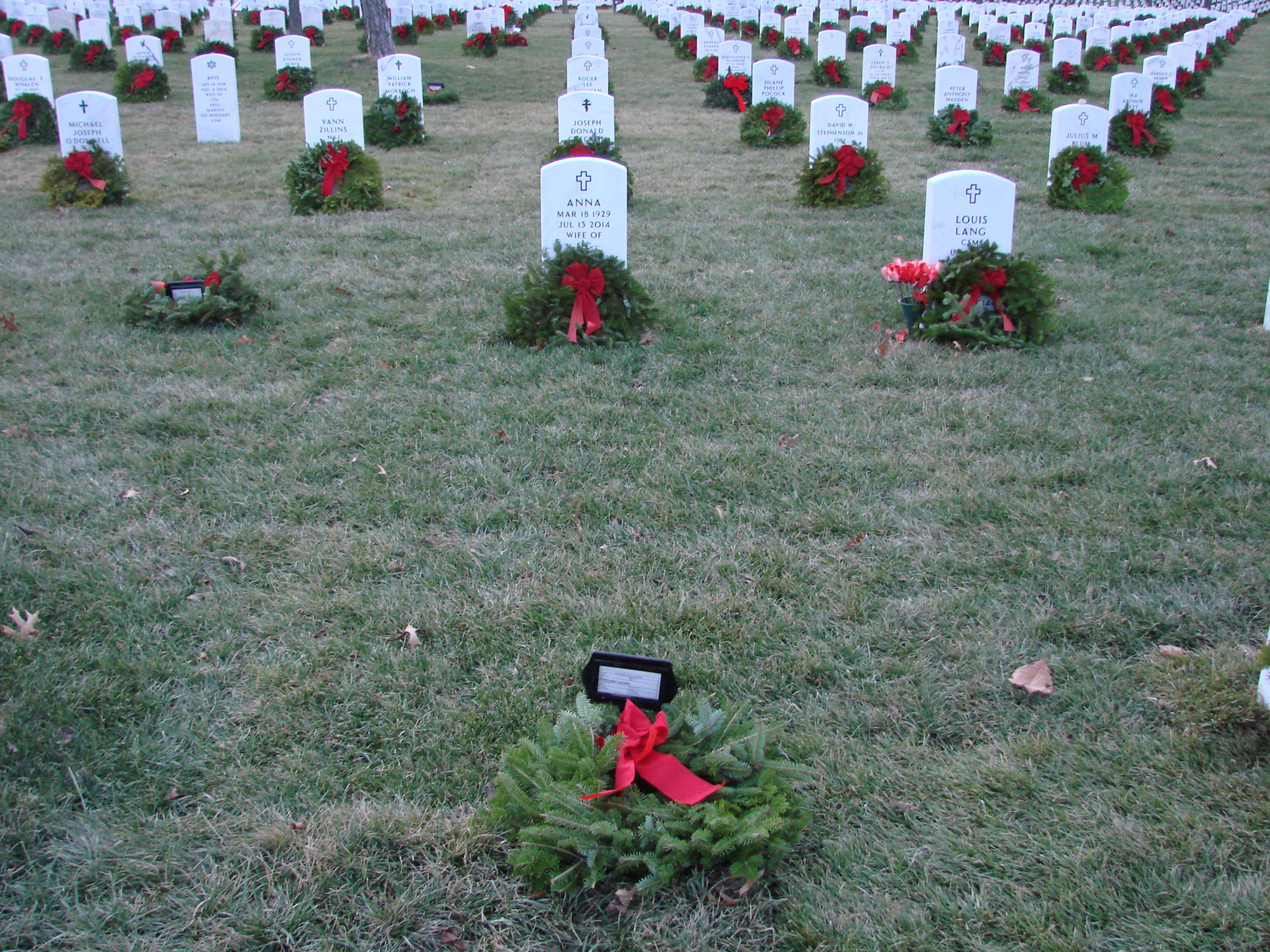DNA tests have finally put to rest the mystery of a soldier who went missing on the island of Saipan during World War II some 70 years ago.
Dog tags and remains found in August were recently identified as U.S. Army Pvt. Bernard Gavrin, who was reporting missing in action.
"It's quite a story, a once-in-a-lifetime experience and a very unusual one," said the soldier's nephew, David Rogers, 81.
Now Rogers, of West Delray, plans to give his uncle a proper burial at a place he considers the most hallowed ground in America, Arlington National Cemetery in Washington, D.C.
"It's the most awe-inspiring ceremony you can possibly imagine," he said. "But the most important thing is we are bringing Bernie home."
Funeral details will be worked out on July 29 when a representative from the Army meets Rogers. He said the woman is supposed to bring the dog tags with her, which Rogers plans to display in his home.
Gavrin was reported missing in action in 1944 during the brutal battle on the Pacific Island of Saipan, but that was all the news the family received in a telegram delivered by the United States War Department. No one in Rogers' family ever knew what happened to Gavrin — until the tags and human remains were excavated from a mass grave in August.
Rogers is the only living relative to know Gavrin, and provided his DNA in January to see if the remains found alongside the tags belonged to his uncle.
After six months of waiting, he received a phone call Monday with an answer. Genetic testing done by the Joint Prisoner of War Missing in Action Accounting Command confirmed the remains belong to Gavrin.
Gavrin's remains were found by nonprofit Japanese organization, the Kuentai Group. Their mission is to locate remains of 1 million Japanese soldiers killed in war and return them to their families for a proper burial.
During a search in August the group uncovered three sets of American dog tags. One of the three sets of dog tags belonged to Gavrin. The group traveled to the Bull Run Regional Library in Virginia in September, hoping to locate surviving relatives.
Special collection reference librarian Tish Como offered her services. Using public records, census reports and newspaper clippings, Como said she located Rogers' cousins and connected the family tree.
Members of the Kuentai group met with Rogers in January to share the news in person. Kuentai representatives were happy to hear the remains they found matched the name on the dog tags.
"We are glad that our third American soldier can finally go back home," said Kuentai's translator, Yukari Akatsuka, in an email.
When the news reached Rogers, he said he was shocked. The last time Rogers saw his uncle he was 8.
He hadn't heard about his uncle since he was 12 in 1944 when he answered the door for the War Department representative, who reported the news Gavrin was missing during the height of the war in the Pacific theater.
His last memory of his uncle was his grandmother Bessie's haunting screams that followed the telegram.
But Rogers said the ultimate closure for which he has waited decades won't come until Gavrin is buried.
"It's one step closer," he said. "But once the ceremony is performed, that will be the final answer.
DNA tests have finally put to rest the mystery of a soldier who went missing on the island of Saipan during World War II some 70 years ago.
Dog tags and remains found in August were recently identified as U.S. Army Pvt. Bernard Gavrin, who was reporting missing in action.
"It's quite a story, a once-in-a-lifetime experience and a very unusual one," said the soldier's nephew, David Rogers, 81.
Now Rogers, of West Delray, plans to give his uncle a proper burial at a place he considers the most hallowed ground in America, Arlington National Cemetery in Washington, D.C.
"It's the most awe-inspiring ceremony you can possibly imagine," he said. "But the most important thing is we are bringing Bernie home."
Funeral details will be worked out on July 29 when a representative from the Army meets Rogers. He said the woman is supposed to bring the dog tags with her, which Rogers plans to display in his home.
Gavrin was reported missing in action in 1944 during the brutal battle on the Pacific Island of Saipan, but that was all the news the family received in a telegram delivered by the United States War Department. No one in Rogers' family ever knew what happened to Gavrin — until the tags and human remains were excavated from a mass grave in August.
Rogers is the only living relative to know Gavrin, and provided his DNA in January to see if the remains found alongside the tags belonged to his uncle.
After six months of waiting, he received a phone call Monday with an answer. Genetic testing done by the Joint Prisoner of War Missing in Action Accounting Command confirmed the remains belong to Gavrin.
Gavrin's remains were found by nonprofit Japanese organization, the Kuentai Group. Their mission is to locate remains of 1 million Japanese soldiers killed in war and return them to their families for a proper burial.
During a search in August the group uncovered three sets of American dog tags. One of the three sets of dog tags belonged to Gavrin. The group traveled to the Bull Run Regional Library in Virginia in September, hoping to locate surviving relatives.
Special collection reference librarian Tish Como offered her services. Using public records, census reports and newspaper clippings, Como said she located Rogers' cousins and connected the family tree.
Members of the Kuentai group met with Rogers in January to share the news in person. Kuentai representatives were happy to hear the remains they found matched the name on the dog tags.
"We are glad that our third American soldier can finally go back home," said Kuentai's translator, Yukari Akatsuka, in an email.
When the news reached Rogers, he said he was shocked. The last time Rogers saw his uncle he was 8.
He hadn't heard about his uncle since he was 12 in 1944 when he answered the door for the War Department representative, who reported the news Gavrin was missing during the height of the war in the Pacific theater.
His last memory of his uncle was his grandmother Bessie's haunting screams that followed the telegram.
But Rogers said the ultimate closure for which he has waited decades won't come until Gavrin is buried.
"It's one step closer," he said. "But once the ceremony is performed, that will be the final answer.
Gravesite Details
Interment September 12, 2014 @ 1:00 PM
